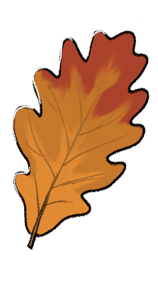The Phylum Chordata, the chordates, is the part of the Animal Kingdom containing organisms that possess a structure called a notochord, at least during some part of their development. The best known chordates are the vertebrates (fishes, amphibians, reptiles, birds, mammals). The vertebrates and hagfishes together comprise the taxon Craniata. Also included in the phylum are the tunicates (Urochordata) and lancelets (Cephalochordata). Some extinct groups are also assigned to this phylum.
More information
More information
Subcategories 7
Related categories 2
Sites 9
Overview of the taxonomy of Phylum Chordata, which includes the well-known vertebrates (fishes, amphibians, reptiles, birds, mammals), hagfishes, tunicates, and lancelets.
The Database includes almost 3500 vertebrate species, taxonomic information, English, Portuguese and vernacular names, conservation status and numerous maps illustrating biodiversity hotspots and locations of endemic species.
Biology of the marine flora and fauna with illustrated descriptions of the main marine species of Western Europe.
The ERMS project covers species of the kingdoms Animalia, Plantae, Fungi and Protoctista occurring in the marine environment including all the continental shelf seas of Europe.
Includes photographs and information on a wide range of mammals and reptiles from Canada, the United States and Mexico. Includes fact sheets and distribution maps.
Brief introduction to the chordates, defined as organisms that possess a structure called a notochord, at least during some part of their development. Includes links to information about subgroups and representative animals.
What makes a vertebrate a vertebrate? They have more in common than a backbone. Find out more from the Animal Diversity Web.
Philippe Janvier's article about this clade which differs from all other vertebrates in having a vertically biting device, the jaws.
Introduction to the vertebrates and their classification, including the Hyperoartia, or lampreys, and the Gnathostomata, or jawed vertebrates.
The ERMS project covers species of the kingdoms Animalia, Plantae, Fungi and Protoctista occurring in the marine environment including all the continental shelf seas of Europe.
Biology of the marine flora and fauna with illustrated descriptions of the main marine species of Western Europe.
Brief introduction to the chordates, defined as organisms that possess a structure called a notochord, at least during some part of their development. Includes links to information about subgroups and representative animals.
What makes a vertebrate a vertebrate? They have more in common than a backbone. Find out more from the Animal Diversity Web.
Philippe Janvier's article about this clade which differs from all other vertebrates in having a vertically biting device, the jaws.
Includes photographs and information on a wide range of mammals and reptiles from Canada, the United States and Mexico. Includes fact sheets and distribution maps.
The Database includes almost 3500 vertebrate species, taxonomic information, English, Portuguese and vernacular names, conservation status and numerous maps illustrating biodiversity hotspots and locations of endemic species.
Introduction to the vertebrates and their classification, including the Hyperoartia, or lampreys, and the Gnathostomata, or jawed vertebrates.
Overview of the taxonomy of Phylum Chordata, which includes the well-known vertebrates (fishes, amphibians, reptiles, birds, mammals), hagfishes, tunicates, and lancelets.
Other languages 3

Last update:
October 21, 2023 at 5:45:10 UTC

Check out
Regional: North America: United States: Business and Economy: Shopping: Antiques and Collectibles
- Recently edited by shedragon
- Recently edited by shedragon